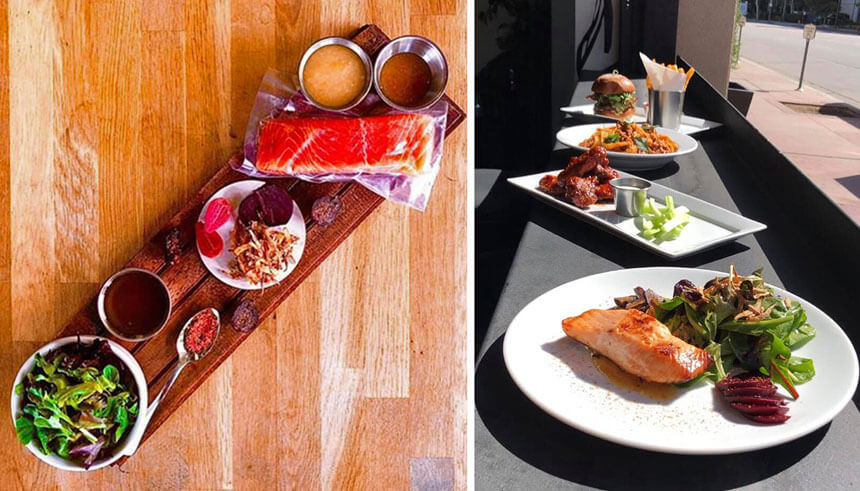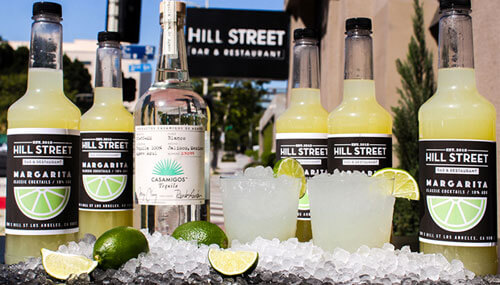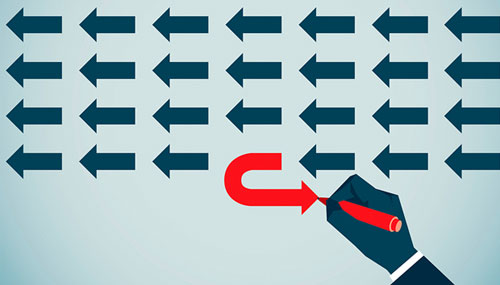Entrepreneur Insight
Road to Reopening: Hill Street Bar & Restaurant
By Daisy Lin

How to package your services into a product, communicate safety, and other reopening tips
The restaurant business is notoriously cutthroat, so when Hill Street Bar & Restaurant in Downtown Los Angeles began to see a full house every Saturday night less than a year after opening, owner Dan Trapp and the staff were encouraged. Their strategy of appealing to city workers and downtown professionals was working, and the restaurant was gaining traction among patrons of Walt Disney Concert Hall, The Broad museum and other nearby attractions.
“We were starting to kill it,” Trapp says.
Then COVID-19 hit. While they had loyal customers who were ordering takeout, revenue was only 10 percent of what it was before the pandemic. Now, as they plan their reopening strategy, the staff are building upon the pivots they made to keep multiple revenue streams going and upgrade their digital capabilities.
Businesses across the country are learning hard lessons as they take steps toward reopening. All 50 states began to reopen in some capacity, though some are now pausing their plans due to rising COVID-19 cases, and while requirements vary from state to state, there are best practices that companies in all industries can adopt or start to think about, in order to ensure a smooth reopening in the future. Austin Clay, vice president of commercial banking at East West Bank, advises business owners to stick to the core values of their business, while improving upon current capabilities. “Stay sensible and do not overreact to the daily volatility in the market,” Clay says.
It’s also important to maintain a growth mindset, according to business consultant Laura Bechard, founder of ProVision Business Advisors. “For many of us as business owners, the time that we're in right now is one of the most challenging times that we've met in our lives… It's about the passion for stretching yourself and sticking to it, especially when it's not going well—that’s the hallmark,” says Bechard.
Safety and communications
Hill Street was able to keep staff employed after East West Bank helped them obtain a Paycheck Protection Program, or PPP, loan. Once that was secured, they implemented a slew of new safety protocols: Employees get their temperature checked with a forehead thermometer at the beginning of every shift, must fill out a questionnaire about their health that gets logged daily and are required to wear masks for the duration of their shift.
Upon reopening, they reconfigured the tables to maintain social distancing, and also opened up the giant lift windows at the front of the restaurant for ventilation and an open-air dining experience. On holiday weekends, they served food and drinks through an outdoor bar, in the spirit of the LA Alfresco Initiative, which allows restaurants to convert sidewalks and parking lots into outdoor dining areas. To reduce customer touch points, they took away salt and pepper shakers and gave grinders for waiters to dispense at the table. They also use paper tablecloths that are switched out after each sitting and offer customers the option of disposable silverware. A top priority is upgrading their website to enable online ordering.
“A number of businesses that have been pivoting during this time have discovered new target markets that are using their services… look at how has your target market evolved.”

Bechard recommends that businesses be transparent with customers about the safety measures that are being taken and suggests creating videos as a method of building confidence. “Your customers want to hear how you have adapted and innovated, and they want you to be communicating with them,” she says. “Video is the best way of connecting and making those personal connections because you're able to hear voice quality, inflections, and you're able to assess mood.”
Some examples include behind-the-scenes videos and photos for social media of safety procedures and protocols, even clean-up crews performing deep sanitation while it’s happening.
“Even the images that you're using in your advertising or on your website may need to change now, so that you are showing the new way of opening,” she says. “You may need the pictures of the signage, with the dots on the floor and the arrows if you've got a physical space, so that people can see that your imagery and your ads are compliant with the new normal.”
And this transparency holds true even when it comes to costs. If your cost structure has changed because of reduced capacity and new expenses for personal protective equipment, those are all costs that impact the profitability of your business.
Hill Street found ways to pare back expenses and cut costs. Typically, they bought thousands of dollars’ worth of food a week, all of it delivered by suppliers with minimums of $250 to $500 per drop off. Trapp says they stopped some of those deliveries and instead went to pick up supplies from Restaurant Depot, a wholesale cash and carry warehouse. They also made meals from excess food and donated those to low-income families through the Boys and Girls Club.
Bechard recommends looking at your pricing structure and contracts to see where you can modify, cancel or negotiate with suppliers and vendors. If you need to pass some of those costs to customers, then communicating with them about that in an honest way can soften the blow of higher prices.
Offering service as product
Service-based businesses are among some of the hardest hit during the pandemic. However, consumers are still buying products from companies that they trust. “So, how can you turn your service into a product?” Bechard asks. “And if you are not quite sure what that means, just think about the insurance industry. Everything in insurance is a service, but they will say we have a product.”
Bechard advises entrepreneurs to launch product offers for returning clients to get them back into the habit of purchasing from your business, at the same time customizing products to meet the needs of new clients and building a niche.

Hill Street has been creating, testing and rolling out a variety of new products, such as meal kits of signature dishes, which they continue to sell after reopening. “We just were trying to utilize the kitchen and come up with more products that we can make. So, we’ve been trying to perfect a really good chocolate chip cookie,” Trapp says, adding that they have been giving out free samples, even offering protesters who had been flocking to downtown to stop by for a free cookie. “People are starting to buy them,” he says.
They’re also selling wine and cocktails for takeout, and, beyond single drink orders, they began to bottle mixes for cocktails, such as margaritas and Mai Tais, to make at home. “The next thing we're going to do is we're going to bottle up some of our spaghetti sauce and some bruschetta to go,” Trapp says. “The way that I positively look at this is that we didn't really have a big takeout business before. So, we're going to use this time to upgrade our takeout platform on our web page.”
“A number of businesses that have been pivoting during this time have discovered new target markets that are using their services,” Bechard says. “So, you want to make sure that you're not disenfranchising those customers if you go back to your old ways, but…look at how has your target market evolved.” She also recommends extending special offers to loyal customers and brand ambassadors to see if they can help you get the word out.
Hill Street is focused on playing the long game now. “We knew from the beginning that we wanted to be a long-term player,” Trapp says. “So, we will keep the wheels rolling and try to improve upon everything, and get ahead of the game.”
Sign up for the Reach Further Newsletter
We’ll keep you in the know about the latest US-Asia business news and trends.
Suscríbase al boletín Reach Further
Lo mantendremos informado sobre las últimas noticias y tendencias comerciales entre Estados Unidos y China.

